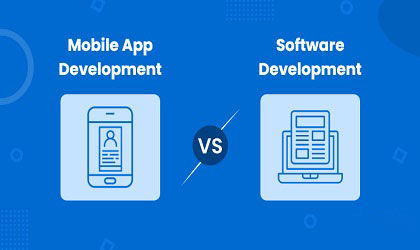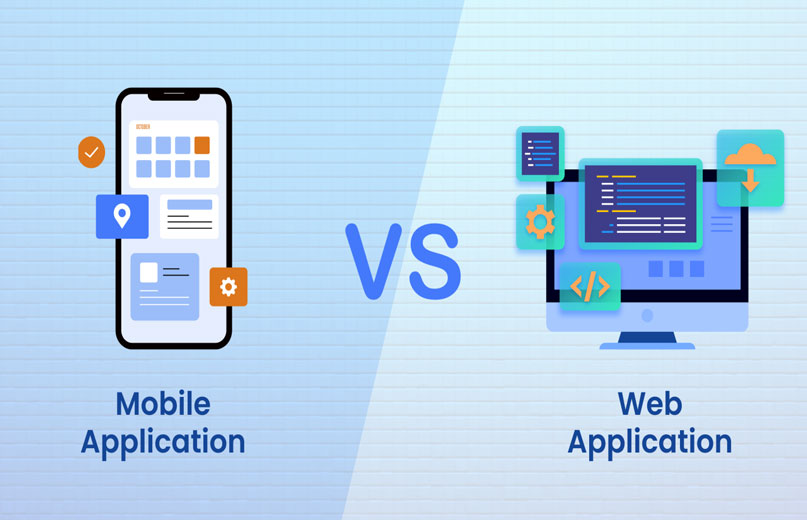In a rapidly evolving digital landscape, businesses must adapt to meet the specific needs of their customers. Custom Web and Mobile App Development has emerged as a crucial strategy for organizations looking to create tailored solutions that enhance user experience and drive business growth. As traditional methods and off-the-shelf software become less effective in addressing unique business challenges, the demand for custom applications continues to rise. This article explores the significance of Custom Web and Mobile App Development, its benefits, and the process involved in creating bespoke applications.

The Significance of Custom Development
Addressing Unique Business Challenges
Off-the-shelf software often falls short in meeting specific business needs. Many businesses operate under unique processes and workflows that generic software cannot accommodate. Custom development enables organizations to create applications tailored to their unique processes, workflows, and customer interactions. This approach helps streamline operations and improve overall efficiency. For example, a logistics company might require a custom application to manage its fleet, optimize routes, and track deliveries, something that generic software solutions often struggle to achieve.
Enhancing User Experience
User experience (UX) has become a cornerstone of digital success. Custom applications allow businesses to design user interfaces and experiences that resonate with their audience. By incorporating user feedback and preferences, custom solutions create intuitive and engaging platforms that enhance customer satisfaction and loyalty. A custom application can provide a seamless experience, from the moment a user lands on the homepage to the final stages of a transaction.
For instance, an e-commerce platform developed with custom features like personalized recommendations and streamlined checkout processes can significantly improve user satisfaction and drive sales. By focusing on UX, businesses can cultivate a loyal customer base, ultimately leading to repeat business and referrals.
Scalability and Flexibility
As businesses grow, their needs evolve. Custom development ensures that applications are built with scalability in mind, allowing for easy updates and feature additions. This flexibility helps the application adapt to new requirements without a complete overhaul. Companies can introduce new functionalities, integrate with other systems, or modify existing features as market demands change.
For example, a startup may begin with a minimal viable product (MVP) that addresses a core problem. As it gains traction and user feedback, the company can easily scale the application to include additional features or even pivot its direction based on market trends. This adaptability is crucial in today’s fast-paced business environment.
Competitive Advantage
Investing in custom solutions provides a significant competitive edge. By offering unique features and functionalities unavailable in generic software, businesses can differentiate themselves and attract more customers. Custom applications enable businesses to implement innovative solutions that address specific pain points, setting them apart from competitors who rely on standard software solutions.
For instance, a restaurant may develop a custom mobile app that includes features like table reservations, order placements, and loyalty rewards, creating a unique dining experience. By offering features that competitors lack, businesses can enhance customer satisfaction and drive loyalty.
The Custom Development Process
Requirement Gathering and Analysis
The first step in Custom Web and Mobile App Development is understanding the specific needs of the business. This involves collaborating with stakeholders to gather requirements, define objectives, and outline desired features and functionalities. By thoroughly analyzing the business model and target audience, developers can create a clear roadmap for the project.
During this phase, it’s essential to involve various stakeholders, including employees, management, and even end-users. Gathering input from different perspectives ensures that the final product meets everyone’s expectations and needs.
Planning and Prototyping
Once the requirements are established, the development team creates a detailed project plan. This plan outlines timelines, resources, and budgets, ensuring everyone is on the same page. Prototyping, an integral part of Custom Web and Mobile App Development, helps visualize the application’s design and user experience, allowing for adjustments before development begins.
Prototypes can range from low-fidelity wireframes to high-fidelity interactive mockups. These prototypes allow stakeholders to provide feedback and make necessary adjustments before the actual development begins, reducing the likelihood of costly changes later in the project.
Design and Development
In this phase, designers and developers collaborate on creating the application. The technical stack for Custom Web and Mobile App Development is selected based on the project’s requirements, ensuring the back-end and front-end components are built to perfection.
Designers focus on creating visually appealing user interfaces, while developers work on the underlying code and functionalities. Collaboration between these teams is crucial to ensure that the application is not only functional but also aesthetically pleasing and user-friendly.
Testing and Quality Assurance
Quality assurance plays a vital role in Custom Web and Mobile App Development. Through various testing methods, including unit testing, integration testing, and user acceptance testing (UAT), the development team ensures that the application is bug-free and performs smoothly across all platforms.
Thorough testing helps identify and rectify any issues before the application goes live, reducing the risk of negative user experiences post-launch. Feedback from testing phases can lead to further refinements and improvements, ultimately enhancing the final product.
Deployment
After testing, the app is ready for deployment. For mobile apps, this involves submission to app stores like Google Play or the Apple App Store, while web apps are launched on secure web servers. The deployment phase requires careful planning to ensure a smooth transition from development to production.
It’s crucial to monitor the application closely after deployment, as users may encounter issues that weren’t identified during testing. Being responsive to feedback and promptly addressing any post-launch concerns is vital for maintaining user satisfaction.
Maintenance and Support
Post-launch, Custom Web and Mobile App Development requires continuous maintenance to ensure that the app remains functional and up to date. This includes fixing bugs, introducing new features, and keeping the application compatible with evolving technologies.
Ongoing support is crucial for long-term success. Businesses should establish a plan for regular updates and maintenance to keep their applications running smoothly. This proactive approach helps prevent issues before they become significant problems and ensures that the application continues to meet user needs.
Benefits of Custom Web and Mobile App Development
Tailored Solutions
With Custom Web and Mobile App Development, businesses can develop solutions that are perfectly suited to their unique needs and objectives, creating a competitive advantage. Tailored applications allow organizations to implement processes and features that align with their specific goals, driving efficiency and effectiveness.
Custom solutions enable businesses to respond quickly to changes in the market or industry. By having the flexibility to adapt their applications, organizations can maintain relevance and stay ahead of competitors.
Better Integration
Seamless integration with existing software systems is a key benefit of Custom Web and Mobile App Development, streamlining processes and improving operational efficiency. Businesses often use a variety of tools and software solutions, and custom applications can be designed to integrate smoothly with these systems.
For example, a custom CRM application can integrate with existing accounting software, allowing for better data flow and improved business insights. This integration enhances overall efficiency and reduces the time spent on manual data entry and reconciliation.
Improved Security
Security is paramount, especially for businesses handling sensitive data. Custom Web and Mobile App Development allows for personalized security measures to protect against potential risks and breaches. Unlike off-the-shelf software, which may have vulnerabilities due to being widely used, custom applications can be developed with robust security protocols tailored to the organization’s specific needs.
Businesses can implement advanced security measures, such as encryption, multi-factor authentication, and regular security audits, to safeguard their data and maintain customer trust.
Cost-Effectiveness in the Long Run
Though Custom Web and Mobile App Development may require a higher upfront investment, the long-term benefits, including better performance, security, and scalability, make it a cost-effective option for growing businesses. Over time, the return on investment (ROI) from custom applications can far exceed the initial costs, as businesses can save on operational inefficiencies and improve overall productivity.
In addition, custom solutions can reduce the need for ongoing licensing fees associated with off-the-shelf software, further enhancing their cost-effectiveness.
Conclusion
Custom Web and Mobile App Development is an invaluable tool for businesses looking to create tailored digital solutions. From enhancing user experience to offering scalability and improving security, custom development is a game-changer. The process may seem complex, but with the right approach, organizations can successfully navigate it and realize the full potential of their digital applications.
Investing in custom development not only helps businesses meet their unique needs but also positions them for growth and success in an increasingly competitive marketplace. As the digital landscape continues to evolve, the demand for custom solutions will only increase. Companies that embrace this shift and prioritize Custom Web and Mobile App Development will be well-equipped to drive innovation, achieve their goals, and thrive in today’s digital marketplace.
Ultimately, custom applications can serve as the backbone of an organization’s digital strategy, enabling them to deliver exceptional user experiences, optimize operations, and foster long-term growth. As technology continues to advance, businesses must remain agile and responsive, leveraging custom development as a strategic asset to maintain their competitive edge.





